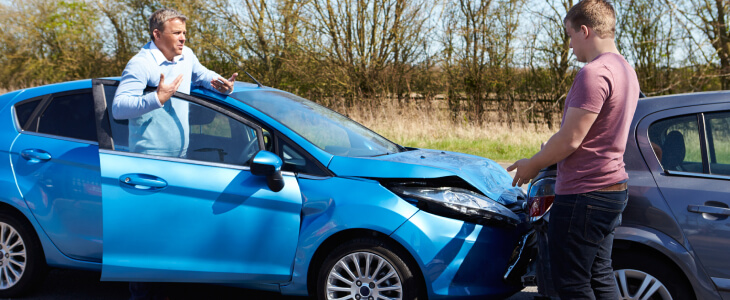Rear-end collisions are a common headache for many drivers, often leaving you with more questions than answers. Imagine you’re stopped at a red light when suddenly, you feel a jolt from behind. The shock, confusion, and concern about what comes next is a scenario familiar to many. Understanding your legal options in these situations can be a step toward resolving the aftermath.
Understanding North Carolina’s Fault Laws
In North Carolina, determining who is at fault in a rear-end collision involves understanding specific state laws on negligence. The contributory negligence rule can be particularly stringent; if you’re found even slightly at fault for the accident, you may be barred from recovering damages. Therefore, proving the other driver’s negligence becomes crucial. This system underscores the importance of gathering comprehensive evidence to establish the other party’s full responsibility.
Common Causes of Rear-End Accidents
- Distracted Driving: Engaging in activities like texting or eating while driving leads to a lack of attention and slower reaction times, increasing the risk of rear-ending the vehicle in front.
- Speeding: Exceeding speed limits or driving too fast for conditions makes it harder to stop in time, contributing to rear-end collisions.
- Tailgating: Following another vehicle too closely gives the driver inadequate time and space to react if the leading vehicle suddenly stops.
- Sudden Stops: Abrupt braking, often due to traffic or road hazards, can catch following drivers off guard, leading to rear-end accidents.
- Poor Weather Conditions: Rain, fog, snow, or icy conditions can reduce visibility and increase stopping distances, contributing to the likelihood of rear-ending.
- Vehicle Malfunctions: Brake failures or other mechanical issues can prevent a car from stopping in time, resulting in a rear-end collision.
What to Do After a Rear-End Collision
After a rear-end collision, your immediate actions can significantly impact your safety and legal rights. First, ensure the safety of all parties involved and move to a secure location if possible. Call 911 to report the accident and request medical assistance if needed. Exchange contact and insurance information with the other driver, but avoid discussing fault at the scene.
Document everything: take photos of the vehicles, damage, and surrounding area, and gather contact information from witnesses. Finally, seek medical attention, even if you feel fine, as some injuries may not be immediately apparent. These steps are crucial in protecting your health and providing essential evidence should you pursue a legal claim.
Proving Fault in Rear-End Collisions
Proving fault in rear-end collisions typically hinges on demonstrating that the other driver’s negligence led to the accident. Evidence such as traffic camera footage, witness statements, and vehicle damage reports can be pivotal. Highlighting violations of traffic laws, like tailgating or distracted driving, can also strengthen your case.
As noted, in North Carolina, due to the contributory negligence rule, establishing the other party’s complete fault is essential, as any fault on your part could bar recovery. Detailed documentation and professional legal analysis are key components in building a robust argument to prove the other driver’s full liability.
Bradford Law Can Help If You’ve Been Involved in a Rear-End Collision
Bradford Law is here to guide you through the complexities of your rear-end collision case. Our experienced team is committed to advocating for your rights and securing the compensation you deserve. Contact Bradford Law today for the support and representation you need.



